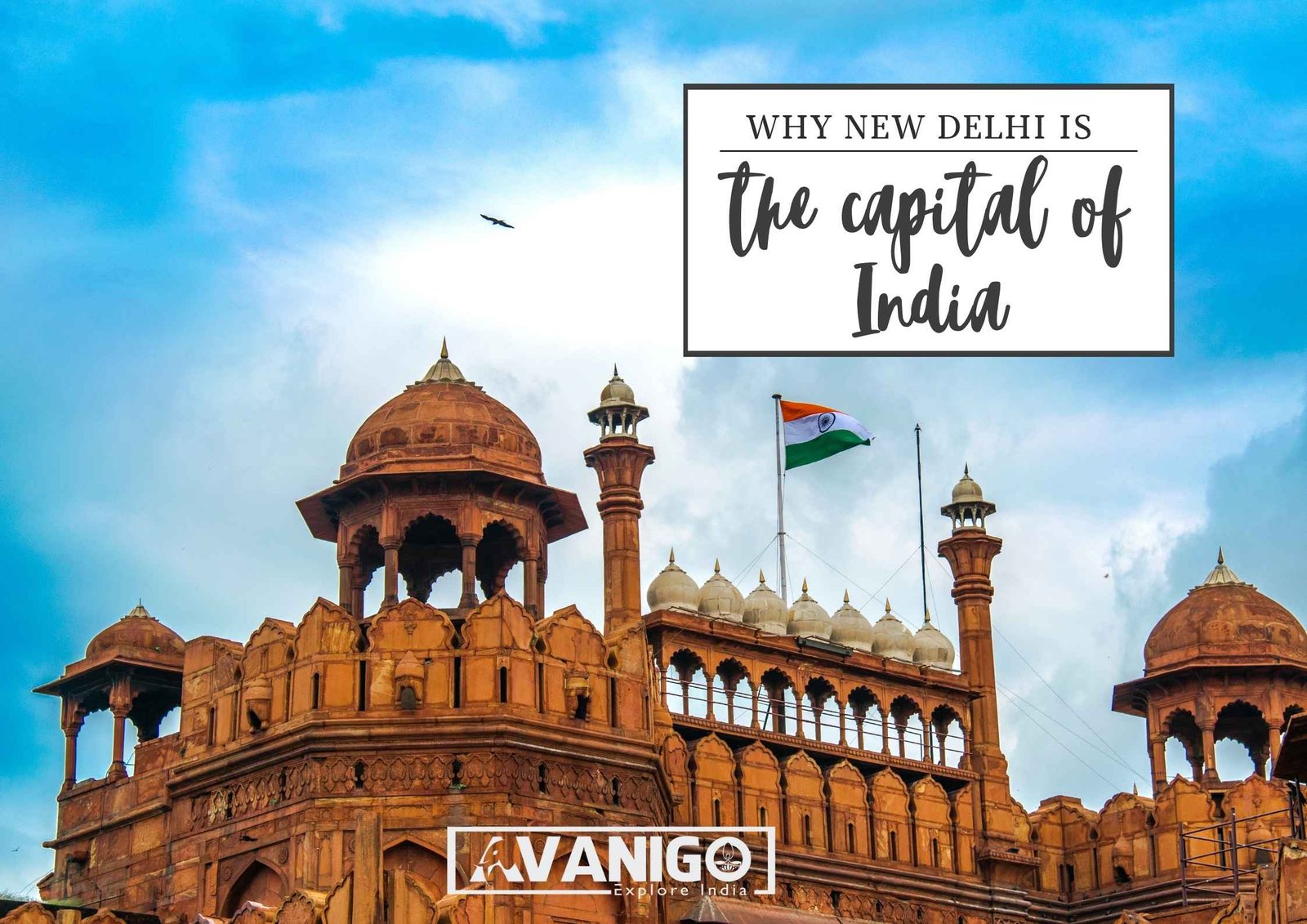Our country has a tremendous historical side, rich culture, and vibrant tradition. The most fascinating part, New Delhi is the capital of India. New Delhi is more than just a capital city resting beneath the northern sky. It shows a norm that embodies the spirit of nation. It reminds us of India’s past and its journey toward modernity. Let us move into the fascinating history of our capital’s making and look into why New Delhi is the Capital of India.
Quick Navigation
The Capital of India before New Delhi
Throughout India’s ancient history, capitals have been located in varied regions, depending on political inclination and cultural geography. From the ancient Indus Valley Civilization to the Mughal period, we have seen different places chosen as capitals. These capital cities now carry a legacy of wonder for scholars and historians. And before Delhi, India’s capital was Calcutta.
The historic district of Shahjahanabad (Old Delhi) is also known as Purani Dilli was the Capital of India before New Delhi. Shahjahanabad, which Shah Jahan built in the 17th century, represented grand forts with magnificent palaces. The Red Fort which depicts soulless Mughal grandeur -now stands as a historical place on the UNESCO World Heritage list.
Why New Delhi is the Capital of India?
New Delhi capital of India, was selected in 1911, which leaves contemplation over various reasons for the consideration. The transfer of power from Bengal to Delhi did not happen suddenly and at once. Two of the primary reasons were:
- The Indian Councils Act of 1909: It was the Morley-Minto Reforms, the other term for the act. With the implementation of this act, people could have self-governance. This led to an increase in the number of Hindus and Muslims in the legislative for the representation of their respective communities. Instead, this event eventually caused more friction between the two communities in the region, sparking the final push for a shift of capital.
- The Partition of Bengal: The partition of Bengal in 1905 directly impacted the place in the 20th century. The Britishers thought that after this, there would be suppression among the nationalists. Instead, this led to the Swadeshi Movement, where people were asked to boycott British goods. The Britishers thought of shifting the capital to New Delhi in 1911 to reduce these tensions.
The British Durbars and the Coronation Durbar of 1911
The new decision was announced in the 1911 Coronation Durbar to convert New Delhi capital of India. The British used it as the third London-type spectacle upon delivering the crown to King George V and announcing Delhi’s creation as the capital city.
The Coronation Durbar was steeped in grandeur, with extraordinary decorations and a parade through a lavishly metamorphosed city. All arrangements were lavishly managed to show the Empire’s power and might. The decision to make Delhi the new capital was motivated by the historical and cultural importance that may be lent to this location concerning India’s Hindu and Muslim populations.
The Planning and Design of New Delhi
Two great architects, Sir Edwin Lutyens, and Sir Herbert Baker, were responsible for designing and building the Capital of India Delhi or New Delhi. Accordingly, Lutyens and Baker aimed to create a city that would be the British government’s power and demonstrate the colonial Empire’s grandiosity and ambition.
Lutyens and Baker had imagined this avant-garde city as straight-planned, neat, and refreshing. They also wanted it to portray the incontestable might of the British Raj.
The architecture of New Delhi was sublime, combining elements of both Indian and Western architectural ideas. Lutyens took inspiration from the Sanchi Stupa for the concept behind the Viceroy’s House (now the President’s House/Rashtrapati Bhavan). Baker took weaving features from Indian architecture like the chattris and jalis, providing mere replications of traditional architectonic milestones.
The Construction of the Capital of India, Delhi or New Delhi
The construction of Capital of India Delhi or New Delhi, required enormous work. Thousands of laborers, artisans, and skilled workers were engaged in translating the concept of the architects into a living reality. Further, it testified to the British Empire’s engineering competence and capacity to mobilize immense resources and men.
Constructing and finishing the Rashtrapati Bhavan, the Secretariat Buildings, and the Indian Parliament House in New Delhi was a detailed work with careful consideration in every aspect. They used top-grade materials to ensure longevity and always serve as an indelible mark of the growing Indian heritage.
As creation in the city advanced, the verdant parks, grand avenues, and large government buildings all began to rise out of the landscape altogether. The move seamlessly transformed a section known only in sections to present the view of a grand colonial city.
The Significance of New Delhi
The establishment of New Delhi as the capital of India has a remarkable historical significance that is not limited to the present. Here are some reasons to understand why New Delhi is the capital of India:
- Symbolism and Unity: The British planned to create an administrative center in Delhi that would unite India’s diverse region under one head.
- Accessibility and Logistics: In proximity to the summer capital of Simla and with well-developed networks of movement, namely the Indian Railways, the capital was favored over many other cities in India, given its effective reach and simple accessibility.
- Architectural Legacy: The design and construction of New Delhi very deftly showed the project’s magnitude to the British.
- House of Power: The city has many important institutions in and around it, such as the central government, the Supreme Court of India, and many others. This greatly influences the politics and general decision-making process in the country.
Conclusion
New Delhi represents national humanity shaped by the power of adaptation to constantly changing times and insulated by its rich heritage. With these emerging developments in place, while shaping the country’s future, the capital remains a constant reflection. It reminds us of the strength and spirit that decide a nation and how we remain a force to ensure peace and prosperity.
Swetha is a Content Specialist, LinkedIn Branding and B2B Marketing Consultant. When she is not in the world of B2B, she researches the roots and beauty of Indian Culture and Traditions. She is the author of the book: 365 Days 365 Posts – The Guide to LinkedIn Personal Branding, available exclusively on Amazon. Connect with her on LinkedIn.

